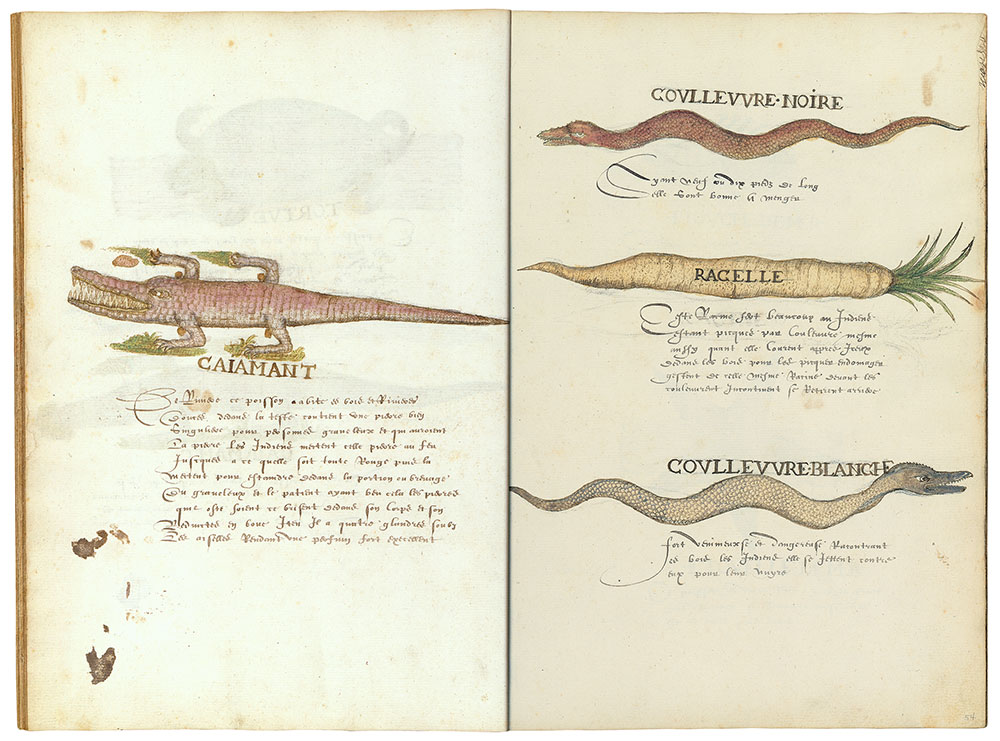
Histoire Naturelle des Indes
Illustrated manuscript
Bequest of Clara S. Peck, 1983
In 1983, The Morgan Library & Museum received, as the bequest of Clara S. Peck, an extraordinary volume whose beautiful paintings and descriptions document the plant, animal, and human life of the Caribbean late in the sixteenth century. Spaniards had already begun to exert influence over the indigenous people of the area when explorers from England and France arrived, among them Sir Francis Drake. The volume, known as the Drake Manuscript and titled Histoire Naturelle des Indes when it was bound in the eighteenth century, gives us a wonderful picture of daily life at the time of Drake's many visits to the region. Although Drake's connection to the manuscript is uncertain, he is mentioned on more than one occasion by the authors. Drake himself is known to have painted, but none of his work survives.
Contents: 199 images of West Indian plants, animals and human life, with accompanying manuscript captions written in late sixteenth-century French.
Medium: Most of the illustrations consist of a black chalk underdrawing and a combination of pen and brown ink with watercolor; on some images selected areas have also been glazed with a gum.
Binding: Bound or rebound in brown leather in the late 18th century.
Pagination: Penciled folio numbers (1–125) in lower right corner of each page were added by The Morgan Library & Museum. Folios 92v–93, 93v–94, and 95v–96 are fold-out leaves.
Caiamant (River Caiman)
This fish lives in the woods and fresh water rivers. It has in its head a peculiar stone for those persons suffering from gravel (in their urine) or from kidney stones. The Indians put the stone in the fire until it is all red, then, in order to cool it, they put it in the potion or drink of the person affected with gravel. The patient having drunk it, the stones which he ejects are broken up in his body and reduced to mud. It (the animal) also has four glands under its armpits giving an excellent perfume.
Covllevvre Noire (Black Snake)
Being nine or ten feet long they are good eating.
Racelle (Racelle Root)
This root serves the Indians well when bitten by the snake. Even when they pursue them in the woods to bite and injure them, they throw some of this same root in front of the snakes which instantly withdraw.
Covllevvre Blanche (White Snake)
Very poisonous and dangerous. Finding Indians in the woods they attack them in order to harm them.
